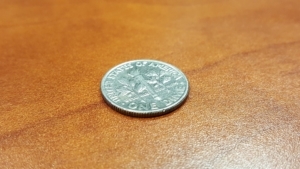10 More Simple, Science-backed ways to reduce Stress (PART 2)
10 More Simple, Science-backed ways to Reduce Stress
Stress comes in many different forms and burdens your life in different ways, the methods to combat it are just as abundant. After 10 Simple, Science-backed Ways to Reduce Stress, we’ve listed out more ways for you to reduce stress. If your stressors are your environment, your work ethic or you’re simply burnt out, there’s a way for you to feel better and get out of the ditch stress has pushed you into.
- Consider supplements. Certain supplements can reduce stress and anxiety. There are more exotic options that promise to reduce your anxiety, but you can never go wrong with green tea. It has been scientifically proven that green tea promotes calmness because of L-theanine, an amino acid that stimulates relaxation in you.
- Light a scented candle. The atmosphere of a room with a lighted candle is warm and soothing, the added scents can also decrease anxiety and improve the quality of your sleep. Some of the calming scents in aromatherapy include geranium, ylang-ylang, sandalwood, neroli, bergamot, rose, lavender, vetiver, roman chamomile, frankincense & orange or orange blossom.
- Stop procrastinating. Slacking off work is a bad habit that leads to a negative reaction e.g., scrambling to stay on top of your piling workload. The thought of putting in more hours than you should just add more to your plate considering playing catch up is stressful enough. Get in the habit of maximizing your productivity so you get more done on time and work doesn’t eat out of your relaxation time. Achieving work-life balance is the key to managing work-related stress.
- Enjoy the outdoors. Studies show that being a shut-in increases the chances for depression and that the occasional stroll in the outdoors reduces the risk for it. A 90-minute walk through a natural environment was found to lower the repetitive negative thinking compared to those in a city setting. Aside from the mental benefits, a healthy dose of fresh air and sunlight will do wonders for your body. Even if you’re not an outdoor person but a homebody, the change of environment will do you some good.
- Take a vacation. How many unused vacation days did you have last year? Make the most out of your allotted vacations to get away from the stress of work and home and be energized, increase productivity (for when you get back of course), increased happiness and heightened sex drive. Don’t think of vacations as a luxury because they’re crucial to your happiness and health, both physical and mental. If you’re in a relationship, it’ll benefit from a getaway too: 80% of people who vacation at least once a year say that romance is still alive in their relationship.
- Sleep right. Don’t overlook sleep in your quest to conquer stress. A night out or an all-night scramble to meet a deadline will leave you groggy and lethargic the next morning. Keep this up and you’ll develop a full-blown anxiety disorder. How to have the right amount of sleep? Time management: get done what you need to do at work, so you don’t bring them home and keep the nights out at a minimum.
- Deep breaths. Breathing exercises where you take slow, deep inhales and exhales will calm down your body. It combats the physiological symptoms that stress brings on. There’s also the mental aspect of it: getting control of your breathing makes you feel that you have a grip on things and that makes you feel immediately better.
- Set realistic goals. A part of what drives us into stress is the immense pressure we put on ourselves to achieve our goals by the deadlines you set. The failure to accomplish them brings on negative thoughts that cause a domino effect on your mental and physical health. The key is to set achievable goals and striving for excellence, not perfection.
- Check your email less frequently. Constantly checking our inboxes is born out of the anxiety crucial e-mails and that being always at the back of your mind is not a good thing. A study found out that people feel less stressed when they check their email less often. Try setting up alerts so you know exactly when your bosses’ email, so you don’t keep checking.
- Time management. The habit of planning things through and seeing it get done is that stress management technique that works best according to a study. People who plan things ahead were fighting stress before it even happened, and thus reduced the onset of stress and frustrated. Get the more difficult things out of the way earlier on and save the easy ones for last so, at the end of the day or week, you don’t feel as rushed or stressed. Don’t be a deadliner.
Contact us today to get the best chiropractor to help reduce your stress!











